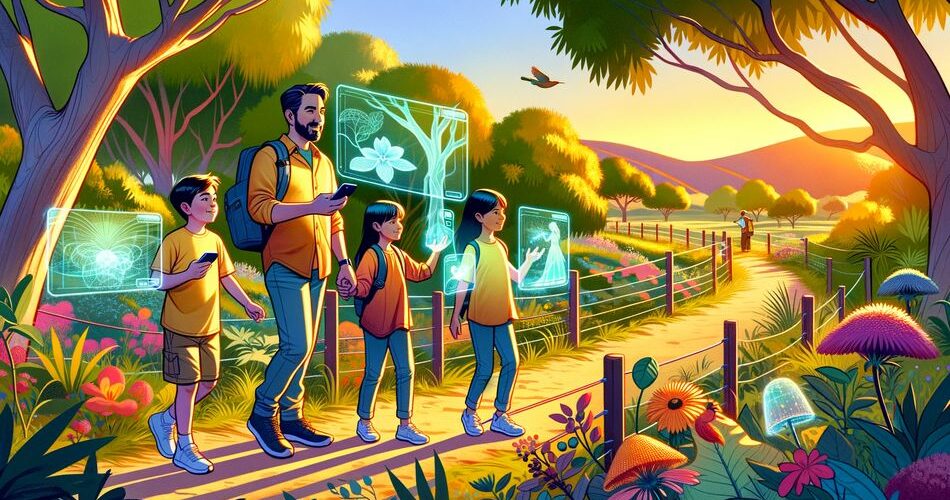Introduction
Technology has seamlessly woven itself into the fabric of modern parenting, presenting countless opportunities to enrich family experiences. One of the most exciting developments is augmented reality (AR), a technology that overlays digital information on the physical world. This blog post explores how families can leverage AR to turn visits to museums and nature trails into immersive learning adventures. Such tech-enhanced outings can captivate children of all ages, making education both fun and memorable.
Body
The Magic of AR at Museums
Traditionally, museums are seen as serene havens of learning, where visitors quietly absorb the exhibits. However, AR brings a dynamic twist to this experience. By using smartphones or AR glasses, families can superimpose digital animations, trivia, or even historical reenactments over the static displays. Imagine standing before a dinosaur exhibit and witnessing a lifelike T-Rex roaming through a prehistoric landscape, or pointing your device at an ancient artifact to see it reconstructed in its original, pristine form.
Many museums have caught on to this trend. For instance, the Smithsonian Institution offers an app that uses AR to provide interactive tours of its vast collections. The National History Museum in London has a similar app that lets young explorers engage with exhibits in new ways, solving puzzles and uncovering hidden facts. These digital layers make learning more interactive, encouraging children to ask questions and explore deeper.
Enhancing Nature Trails with AR
Nature trails, too, can benefit immensely from the application of AR. As families hike through forests, mountains, or parks, AR apps can provide real-time information about the flora and fauna around them. Pointing a device at a curious plant or an unfamiliar bird can instantly provide its name, characteristics, and ecological importance, transforming a simple walk into an educational adventure.
Organizations like the National Park Service have integrated AR into their visitor experiences, offering apps that reveal the ecological and historical richness of various trails. For example, the “Agents of Discovery” app allows children to play interactive games while learning about nature. This immersive form of education not only makes the hike more engaging but also instills a deep appreciation for the environment in young minds.
Practical Tips for a Successful AR Family Adventure
Here are some pointers to ensure your family gets the most out of their AR-enhanced adventures:
- Research Ahead: Look up AR-compatible museums and trails before your visit. Download necessary apps in advance and make sure they are compatible with your devices.
- Stay Charged: AR applications can drain battery life quickly. Carry portable chargers to ensure your adventure isn’t cut short.
- Engage Actively: Encourage your children to lead the exploration. Let them handle the devices and make observations, fostering a sense of responsibility and curiosity.
- Balance Screen Time: While AR can greatly enhance learning, balance it with moments of traditional interaction with the exhibits or nature to ensure a well-rounded experience.
Conclusion
Integrating augmented reality into family outings to museums and nature trails offers an innovative blend of education and entertainment. This technology can transform routine visits into enthralling and informative experiences, sparking curiosity and joy in children. Embracing these tech-fueled adventures can not only make learning more fun but also create lasting family memories. As AR technology continues to evolve, its potential to enrich our understanding of the world around us is boundless. So, gear up, get tech-savvy, and embark on your next family adventure equipped with the magic of augmented reality!

